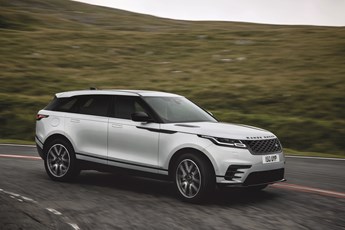
The start point for the best source of fleet information |
First drive: Range Rover Velar PHEV
Date: 07 July 2021 | Author: Simon Harris

|
|
||||||||||||||||
Jaguar and Land Rover appear firmly committed to a future of electrified vehicles. Jaguar has already announced that its line-up of cars will be entirely electric by 2026, while Land Rover is on the same path but over a longer period.
Some of Land Rover's vehicles are regarded as essential tools, and charging infrastructure is not yet where it needs to be in some of the remote corners of the world where they operate.
But for other drivers, there is now a growing choice of plug-in models. The Range Rover Sport and Range Rover gained supplementary electric drive three years ago, while the Range Rover Evoque and Land Rover Discovery Sport were offered as PHEVs from late 2020.
The latter two shared their plug-in hybrid powertrains with the Jaguar E-Pace P300E launched this spring, and the new Range Rover Velar P400E is mechanically identical to the Jaguar F-Pace.
The updated powertrain line-up for the Velar coincides with its mid-life facelift, and aside from the plug-in hybrid, new six-cylinder diesel engines replace twin-turbo versions of the four-cylinder diesel, while the entry level diesel is upgraded from 180hp to 204hp and includes mild hybrid technology.
The update also includes the adoption of the new Pivi infotainment system - which, from previous experience in other new JLR cars, is one of the better ones on the market as its largely clear and intuitive - and the rotary gear selector has been replaced by a joystick-style arrangement.
The new 2.0-litre four-cylinder P400e plug-in hybrid produces a combined 404hp and 640Nm of torque from its 300hp petrol engine and 105kW (140hp) electric motor, with 0-60mph possible in 5.1 seconds.
The 17.1Wh lithium-ion battery, located under the boot floor, can be charged to 80% in 30 minutes using a fast DC charge point (although most PHEV users wouldn't bother with this), or an hour and 40 minutes using a standard 7kW wallbox, although for plug-in hybrids with limited EV range, most customers will prefer waiting around a little longer for maximum charge.
Like the F-Pace, with the combination of its mass, electric power and battery capacity, the Velar P400E is just on the cusp of being ultra-competitive for BIK with only one variant achieving 50g/km and the others slightly higher. It means a 3%-point difference in BIK between the best performing variant (a standard model with the R-Dynamic pack) and the others, so it's worth reminding drivers in this bracket to choose carefully.
Although even at 14% BIK tax for 2021/22, most of the drivers in the bracket for this kind of car shouldn't find BIK tax payments of around £300 a month too arduous.
We also liked the fabric upholstery in our test car - could leather be going out of fashion? - as well as Land Rover's multi-camera view should anyone need to take their Velar on tracks littered with obstacles.
It perhaps isn't a 100% rational choice in this sector, but it looks great and, relatively speaking, appears good value as well.
Range Rover Velar P400E S
P11D: £61,700
Residual value: 46.4%
Depreciation: £33,105
Fuel: £2,743
Service, maintenance and repair: £3,102
Cost per mile: 64.9p
Fuel consumption: 124.6mpg
CO2 (BIK %): 52g/km (14%)
BIK 20/40% a month: £144/£288
Luggage capacity: 558 litres
Engine size/power: 1,997cc/404hp
Verdict |
8/10 |
|||
 |
|
 |
|
|










